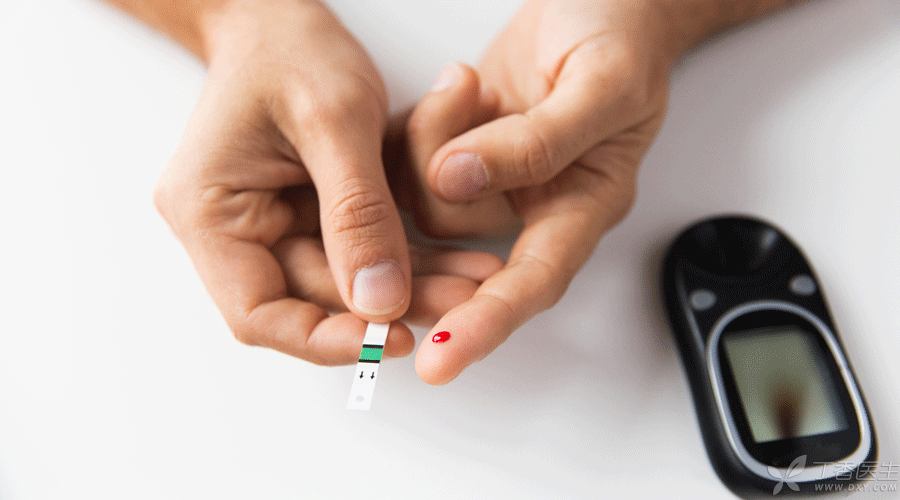
Speaking of the heredity of diabetes, everyone may have heard of it long ago, but it is somewhat unexpected to say that it is contagious.
In fact, diabetes is indeed possible [contagious]… The reasons can be summarized into the following three points:
One defeat in heaven and earth (may have bad genes), two defeat in high sugar (may have bad eating habits), and husband and wife defeat (may have bad living habits and influence each other).
Why do you say that?
Dr. Clove invited Dr. Wu Yuan from the Department of Endocrinology and Metabolism today to answer questions for everyone.
Diabetes is both hereditary and contagious?
Yes.
Regarding this statement, Swedish scientists have studied 150,000 patients with type 2 diabetes and their 20,000 children. The results show that:
If someone in a family has diabetes, the risk of diabetes in his family is about 2 ~ 30 times that of the average person.
This tells us that there is a genetic risk for the onset of diabetes.
If a person has two brothers and sisters with diabetes, the risk of diabetes is more than 30 times that of the average person.
This also tells us that the part of genes [shared] between brothers and sisters plays a very important role in the onset of diabetes.
However, if one of the couples who is not related by blood suffers from diabetes, the risk of diabetes for the other is 1.3 times that of the average person.
In other words, diabetes can indeed be transmitted to unrelated family members.
See here, your heart began to play drums:
It’s terrible! How is diabetes contagious?
Can’t you be too close to others if you have diabetes?
Do you want to avoid diabetics intentionally in your life?
… …
Although diabetes is contagious, its [infectivity] is actually different from that of ordinary influenza and hepatitis B..
How is diabetes contagious?
The [infectivity] of general infectious diseases means that it can spread the disease through viruses, bacteria, etc., while the [infectivity] of diabetes is mostly related to similar lifestyles between husband, wife and family members, especially some unhealthy lifestyles.
Some scientists infer that:
[Shared] living environment contributes about 30% to the occurrence of type 2 diabetes.
Then the question arises, which lifestyles are prone to diabetes?
- Unhealthy diet: for example, love to eat high energy, high sugar, high fat, low dietary fiber food, and prefer various processed foods; Lack of exercise: for example, driving more, walking less and sitting for a long time; Other factors: such as poor sleep quality, low mood, economic conditions, etc.

These living habits are not very conspicuous, and many people may not think so after listening to them, but it is also because of this that diabetes has an opportunity to take advantage of them and [infect] one after another.
See here, your heart began to play drums again:
Shit! My diabetes is definitely going to spread to my family… … …
Someone in my family has diabetes, so it seems that I will inevitably have it.
… …
Is the problem really that serious?
Destined [one person gets sick, the whole family gets sick]?
No, no, no, in fact, the [risk] of getting sick is only a matter of probability. Even if a person belongs to a high-risk group with a certain disease, if preventive measures can be taken in time in life, diabetes can only look at you from a distance and cannot approach you.
Prevention methods are not difficult, such as:
Step 1: Eat a healthy diet
Choose fresh whole grains, fruits and vegetables, and try to avoid high-energy, high-sugar, high-fat, low-dietary fiber diets and various packaged and processed foods.
2. Moderate Exercise: Aerobic Exercise for at least 150 Minutes a Week
You can choose to walk fast, play Taijiquan, swim and other sports. As for the intensity of exercise, my personal feeling is probably: a little hard during exercise, and my heartbeat and breathing are faster but not faster.
It can also be matched with resistance exercises twice a week, i.e. Exercises such as horse walking, squatting against the wall and walking with heavy loads.

Step 3: Weight and waist circumference control
Fat, it really makes us more susceptible to illness.
Try to keep BMI between 18.5 and 23.9 kg/m2. Control waist circumference and avoid abdominal obesity (also known as “apple obesity”), which is < 85 cm for women and < 90 cm for men.
4. Regular medical examinations
Physical examination is conducted every six months to one year, mainly to check fasting venous blood sugar level and other examinations recommended by doctors. The earlier detection and treatment are carried out, the more likely it is to improve the quality of life after that.
5. Other
Don’t put too much pressure on yourself, eat when you should eat and sleep when you should sleep. No what is more important than being happy.
In this way, whether diabetes can be contagious depends mainly on our own choices.
So, what is your choice?
